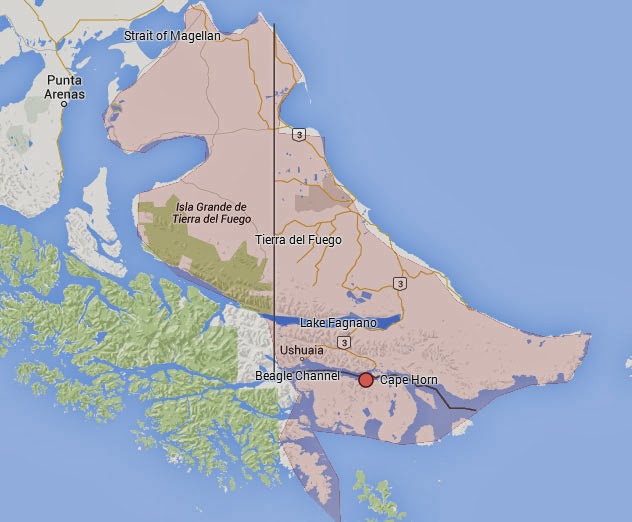Spectacled Bears Seen Near Machu Picchu!
Growing up, the mention of a Spectacled Bear (Tremarctos ornatus) would bring to mind images of a terribly sad and bored animal confined to a circus cage. Spectacled bears at a circus or at the local zoo is what most of us knew about this charismatic shaggy-furred animal. And there is a reason for that. Spectacled or Andean Bears live in a variety of habitats, but appear to favor the dense Andean jungles of South America and are intensely shy.
A bear of unique adjectives.
The Spectacled Bear has the distinction of being South America’s only bear. They are among the smallest members of all bear species (family Ursidae). Males, which are significantly larger than females, grow over 5 feet (1.5 meters) in length and weigh up to 340 pounds (154 kilograms). Females rarely weigh more than 180 pounds (82 kilograms). They are so named for the whitish to yellowish rings that encircle their eyes, resembling large eyeglasses. These lines, however, don't always fully encircle the eyes, and some individuals lack the markings altogether.
I can claim to have seen a Spectacled Bear
Very few people including those living in the core of bear habitat can claim to have seen one. I was fortunate to have had a “face to face” encounter with a male bear. For three years, I spent several months each year collecting information towards my master thesis in the lush Andean forest of Southeast Peru. Every day, I would spend, literally from dawn to dusk walking along trails, some of which I had open myself. In one occasion, I ran into pieces of bromeliad that had been shredded into pieces. I later learned that the shredded bromeliad was likely the job of a Spectacled Bear. I thought that was the closest I would get to a wild bear as the elder woman at the household I was staying at had seen a bear only twice over the many years she had lived there.
You never know what’s around the corner.
One morning like any other, I set off to one of my survey trail. As I make a sharp turn around a curve of the trail where the right side was a rocky wall and the left side forest, I came face to face with a Spectacle Bear coming on the opposite direction. The bear and I froze on the spot. The bear looked at me as if it was trying to figure me out while, during the few seconds our encounter lasted, I kept saying to myself “please, pretty please turn back first”. I did not want to run because I knew, or thought I knew, that if one runs many animals will sense you are afraid and will come after you. Pffffiu! the bear very deliberately turned around and walked back on the trail for about 20 yards, then left the trail and took to the woods. It took me a few minutes to digest what just had happened. But that was not the end. Still excited about the experience, I kept on going to my survey trail and stopped at the point the bear took to the woods, searching through the foliage to see if I could still catch a final glimpse at a distance. Little did I knew, within seconds I was peaking a big animal run crushing away from just a couple of yards from where I was; I assume it was the bear waiting for me to walk by so the it gets back on the trail and continue on the direction he was initially going. I said I assumed it was the bear because this time I ran as fast as I could without looking back. I vividly remember my encounter with a spectacled bear as if it had taken place the last month.
A lucky bunch sees a spectacled bear mother and cub near Machu Picchu.
During the first International Birding Rally, a group of world renowned birders were rewarded by extensive looks at a mother and cub spectacled bear at Aguas Calientes near the Inca Citadel of Machu Picchu. The idea of seeing a spectacled bear had not even crossed these folk’s minds. I am not sure many knew this was even a possibility. As they were looking for Masked Fruiteaters, Golden-headed Quetzals and White-eared Solitaires in the lush rainforest along the torrent Urubamba River, a mother bear and cub were spotted across the river.
The bears were eating berries and building a nest for the night. Everyone had time for study looks at the mother and the cute cub as they pull branches to what appeared to be a nest. Our own Fernando Angulo was part of that group and shot this video using a photography camera. That was definitely the highlight of the day. Some folks later realized the magnitude of what they had just experienced.
The Spectacled Bear has also been called the Andean Bear due to the fact that they are largely restricted to the Andean Mountain Chain. Population data are sketchy, but some estimates suggest fewer than 3,000 spectacled bears may remain in the wild today. Their numbers suffer primarily from destruction and fragmentation of their habitat. Poachers also hunt them for their meat and body parts, and farmers kill them as agricultural pests. They are currently listed as vulnerable to extinction. Currently, there is an ongoing rescue and re-introduction program aimed to reinforce the existing bear population in northern Peru. Also there is an ongoing multi-year field study of the spectacled bear population in Northern Peru. We will be reporting about both these programs in future posts.





Comments
Post a Comment